Rust2Green Utica Capstone Studio
Utica, NY
The Rust to Green (R2G) Capstone Studio in Landscape Architecture was held for 6 consecutive years (2011-2016) at Cornell. It was taught by Paula Horrigan who designed it to support the R2G Action Research Project she was also spearheading and which has been unfolding in Utica, NY, as R2G Utica, since 2010. Because it was designed to support R2G, the Capstone was intentionally developed as a service-learning course modeled on democratic civic engagement, teaching community design and placemaking, and bringing together university and community collaborators to work on actionable placemaking and community development projects in Utica. The studio echoed the relational nature of the larger R2G initiative in which it was embedded and helped foster greater university-community reciprocity, mutual trust, and community capacity. Engaged Cornell is now supporting a 2-year R2G Collaborative Evaluation Project studying R2G’s impact on students–professionally, academically and personally– as well as on the Utica community.
- Goals
Teaching and learning democratic design theories and practices and specifically community design and placemaking; Engaging in actionable placemaking in Utica NY through placemaking collaborations with community partners; Building and fostering placemaking, community development and capacity contributing to greater urban sustainability and resilience in Utica and NY’s Rust Belt region. - Service Learning & Community Engagement Pedagogy
The Rust to Green (R2G) Capstone Studio was created to support the R2G Action Research Project unfolding in Utica NY as R2G Utica (2010-present). From the outset, as participants in the 5-credit Capstone during 6 Spring semesters (2011-2016), students from landscape architecture have acted as key contributors to the R2G effort. R2G’s praxis is best framed and defined as placemaking– a democratic design process and purpose that fosters greater environmental justice, equity, community empowerment, and ecological and landscape democracy. Because it was designed to support R2G, the Capstone was intentionally developed as a service-learning course modeled on democratic civic engagement, teaching community design and placemaking, and bringing together university and community collaborators to work on actionable placemaking and community development projects in Utica. It was designed to expose students to placemaking’s inherent democratic design practices and habits in hopes that they, as future practitioners, would begin to distinguish how design involves ethical choices and can either hinder or encourage greater democracy, civic engagement and place belonging. Over the semester, the Capstone emphasized collaborative problem-solving–with peers working in teams, faculty mentors, and community mentors and collaborators–achieved through participatory design convenings, workshops, meetings and dialogues. Students were exposed to community design and placemaking theory and practice –in readings and case studies– and above all, through directly engaging in placemaking with community collaborators. In the Capstone reflection happening during in-class group reflection sessions, via individual written and videoed critical incident reflections and assignments, peer-to-peer dialogues, and pre- and post reflections. - Student/Participant Experience
For student participants the R2G Capstone required learning and developing, usually for the first time, not only placemaking tools and methods for encouraging greater democratic engagement and co-creation but also reflection practices and relational collaboration with student peers and also community collaborators. And it often required such tasks as organizing, activism, and shared decision-making. Together this was a tall order for students whose prior studio experiences may have tended towards more narrowly framed design assignments with far more limited, if any, community interaction. Such a tall order often caused agitation and disruption and led students to ask, “is this design?” or “what has this got to do with design,” or “when do we get to design?” For students, there’s no question the emergent unpredictability and relational complexity of ‘design in action’ with and in a community, proved challenging. So did being taught and mentored by a more socially engaged ‘activist’ professor/mentor, employing engaged practices and pedagogy, after having been ‘professionalized’ in more traditional courses and studios. Reflection exercises and interactions definitely enabled unpacking and examination of critical incidents, challenges, successes, personal values and ethics and professionals’ role in society. It’s difficult to gauge whether the R2G Capstone experience actually promoted and encouraged greater civic responsibility and the development of citizenship skills. A number of students chose AmeriCorps Vista and public practice after graduation and we are hoping more insights will surface –through the R2G Collaborative Evaluation Project– regarding how student participants feel their experience affected them professionally, educationally and personally. - Community Experience
The sustained R2G Utica community-university partnership is itself an outcome of the R2G Action Research Project. It has been instrumental in building and fostering community capacity and change, from the ground-up, across the long term. The Capstone studio played a pivotal role as one of several different avenues through which students and faculty participated in R2G and contributed to community capacity building. Through the studio, students acted as a conduit linking academic, professional and local knowledge and resources to one another. The Capstone’s placemaking and engagement focus attracted and guided a youthful, optimistic student cohort that was charged with imagination and eager to interact with real people and places. Rather than casting them in a role as experts, the studio mentored students to embrace placemaking praxis and to seek and discover design solutions emerging through relational behaviors and processes that honored and encouraged the networking and combining of community and university knowledge. The studio echoed the relational nature of the larger R2G initiative in which it was embedded and helped foster greater university-community reciprocity, mutual trust, and community capacity. In Utica, several lead partners emerged to sustain and fund R2G Utica (CCE Oneida, City of Utica and Community Foundation). Jointly, with Cornell, in 2014 they established an R2G Urban Studio in City Hall. In 2018, R2G Utica, Inc. established as a non-profit fiscally sponsored by the Community Foundation. Approximately $7M in state and federal funding has been secured for implementing community development projects directly arising from the partnership. - Faculty/Staff Experience
Personally and professionally, the R2G Capstone enabled me to bring my teaching in closer alignment with my passion for placemaking and democratic design, my service-learning pedagogy and action research knowledge, and my commitment to community-engaged design and research promoting greater resilience and sustainability in NY’s Rust Belt region where I live and which surrounds Cornell. It also challenged me to be a better teacher, designer and scholar, to dive deeper and to more closely interrogate and inspect the systems and structures at work in the community, at my university and in academia more broadly, and also in the landscape architecture profession. R2G has opened me to and drawn me into a larger community of collaborators in different fields (engineering, planning, sociology, adult ed, natural resources, fine arts, architecture, human ecology) and created new opportunities for collaboration. But, it has also exposed challenges and difficulties associated with collaborating and transcending disciplinary boundaries. There’s no question R2G has directly grown out of and also motivated engagement with a broader peer community through, for example, the Erasing Boundaries Project, EDRA, IARSLCE, Center for Landscape Democracy and the Public Interest Design Network. It is my hope that R2G has contributed to the social, personal and professional growth of students and community participants. Some evidence of its impacts has been provided by interviews, stories and reflections as well as long sustained relationships with community partners. Certainly it is my hope that the R2G Participatory Evaluation Project will further reveal its contribution to students and community. - Institutional Priority
Community-engaged student learning has been central to R2G from day one and is now a mission focus of Engaged Cornell which regards R2G as a model initiative. To support student learning R2G faculty have created high quality learning experiences taking the form of service-learning courses like the R2G Utica Capstone Studio. R2G engaged scholarship has also been integrated into other existing Cornell courses and new curricula and workshops have been created to support R2G. R2G faculty have mentored R2G thesis and exit projects and summer-long student R2G Civic Fellowships providing engagement opportunities in Utica as well as in Binghamton, NY through R2G Binghamton. To date, nearly 300 Cornell students have been an integral part of the R2G partnership emphasizing relational reciprocity, reflection and the balancing of academic learning and community outcomes.
R2G has grown from one college and department (landscape architecture) to encompass a much larger academic geography and is now part of the Community and Regional Development Institute in Development Sociology. This is a testament to how R2G has become a meeting ground helping to transcend knowledge divides and gained campus-wide recognition. Cornell believes R2G exemplifies its mission of public engagement and landgrant commitment to NY State. It nominated R2G for the 2018 W. K. Kellogg Foundation and C. Peter Magrath Community Engagement Scholarship Awards for which R2G received honorable recognition. Engaged Cornell is now supporting a R2G Collaborative Evaluation Project researching R2G’s has impact on students and on the Utica and Binghamton communities. - Future Goals
Enrolling and encouraging new university partners (students and faculty), courses and research projects to work with R2G Utica and build the ‘next generation’ of community development and engagement initiatives on the foundation of infrastructure–social capital, networks, relationships, placemaking projects, etc.–produced by and resulting from the first decade of R2G Utica’s existence. Expanding university-community collaborations beyond Cornell to include other Upstate NY universities and colleges. Completing and disseminating findings of the R2G Collaborative Evaluation Project to diverse audiences.


